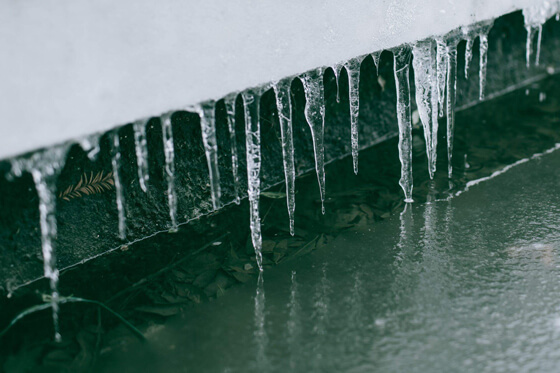As the snow melts, many potential hazards can occur (flooding, water damage, mold damage, and roof damage, to name a few). Taking a few precautions before the snow really melts can be the difference between a restful spring and one spent repairing melt damage. Below are five steps every homeowner should take as winter weather turns to spring thaws.
Melting snow can raise groundwater levels, putting a strain on a poorly functioning sump pump. Be sure that your home sump pumps are in good working order and that drains are clear of debris and flow away from the house.
Insurance policies vary and some cover water damage better than others. Before you need it, make sure you have the necessary coverage and what steps the insurance company requires that you take first before coverage begins. Melted snow can seep into basements through your foundation, and often, insurance policies don’t cover this type of water damage.
The best way to prevent water damage is to keep water away from your house. This is best done by making sure snow and debris haven’t accumulated on roofs and gutters. Heavy snow accumulations can damage roofs, leading to leaks, and gutters full of debris prevent melt from draining properly. Ice dams (gutter water that freezes and expands on cold nights) can push water back under the roof, causing water damage.
Precautions such as wrapping outdoor pipe fittings and allowing for a slow drip in the sink during high-freeze conditions can be all it takes to protect pipes. But in the event, you’re unfortunate enough to suffer a burst pipe, quickly shutting off your water could be the difference between a little water damage and a flooded house. Take time to know where your shutoff valve is and make sure others living in the house know also.
When snow melts, groundwater levels rise as do rivers, streams and creeks. Add a bit of rain and suddenly an area can experience serious flood conditions. If you live in an area prone to floods, or if conditions are deteriorating quickly near your neighborhood, take proper precautions to block water from your home. Utilize sandbags around the foundation of your house to provide an additional defensive layer of protection while also checking neighborhood storm drains for blockages that might allow water to back up into your yard.
A few steps can be all you need to prevent serious water damage from snow melt. If you experience emergency situations with water damage from snow melt, call Green Clean right away to be sure the situation does not escalate quickly.
-Green Clean Team
Prev: Why You Should Care About Ice Dams.Next: What Actually Happens when you Don’t Vacuum?View All Resources